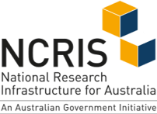A spinal cord injury treatment project has reached an exciting milestone, securing over $6.8 million in funding from the Medical Research Future Fund (MRFF) 2023 Stem Cell Therapies Grant. This funding will support a Phase I clinical trial testing an innovative therapy for spinal cord injury.
The clinical trial will be a critical step in evaluating the safety, feasibility, and efficacy of this novel therapy for spinal cord injury, with the potential to revolutionise care for thousands of individuals. With over 21,000 Australians currently living with chronic spinal cord injury and an annual socioeconomic cost exceeding $3.7 billion, the successful commercialisation of this therapy could have far-reaching impacts. In total, the team has successfully raised $14.3 million in federal, state, and philanthropic funding, underscoring the widespread support for their groundbreaking research.
Therapeutic Innovation Australia (TIA) played an important role in accelerating the project’s development by providing access to key resources and infrastructure, allowing the research team to move faster through pre-clinical stages and into clinical trials.
Led by Prof James St John, the project will test a novel cell transplantation therapy combined with intensive rehabilitation aimed at repairing spinal cord injuries. Using specialised olfactory ensheathing cells (OECs), the team has developed stable, scaffold-free nerve bridges that, when implanted at the site of injury, promote neural repair and recovery. This pioneering approach will be assessed in a first-of-its kind human clinical trial conducted in South East Queensland.
Like many pioneering projects, the team encountered several challenges in transitioning from research-grade protocols to GMP-compliant production. TIA’s support through the Pipeline Accelerator voucher scheme, enabled Dr. Mariyam Murtaza, Research Fellow leading the GMP pilot cell production project, and her team to collaborate with Q-Gen Cell Therapeutics, where they received essential training and gained access to GMP cleanroom facilities. This collaboration allowed the team to navigate the complexities of GMP terminology and requirements and also underscored the importance of strong teamwork, contingency planning, and robust logistics management in complex therapeutic production environments.
“We were able to successfully produce our intended cell therapy product at the GMP facility on our first attempt! It was a fantastic collaborative experience for our team and thanks to the team at Q-Gen, for training us and providing uninterrupted logistic support throughout the process” said Dr Megha Mohan, Research Fellow of the Clem Jones Centre and Neurobiology and Stem Cell Research. The success of this collaboration highlights the crucial role of research infrastructure, bringing this project one step closer to transforming spinal cord injury care.
Prof James St John said “translating preclinical research into a clinical trial is an enormous undertaking. A main focus of the translational stage is on derisking processes to help ensure success of the trial. The support of TIA helped us confirm that the cell production process can be performed with the GMP facility and gave us confidence to go ahead with the clinical trial.”


